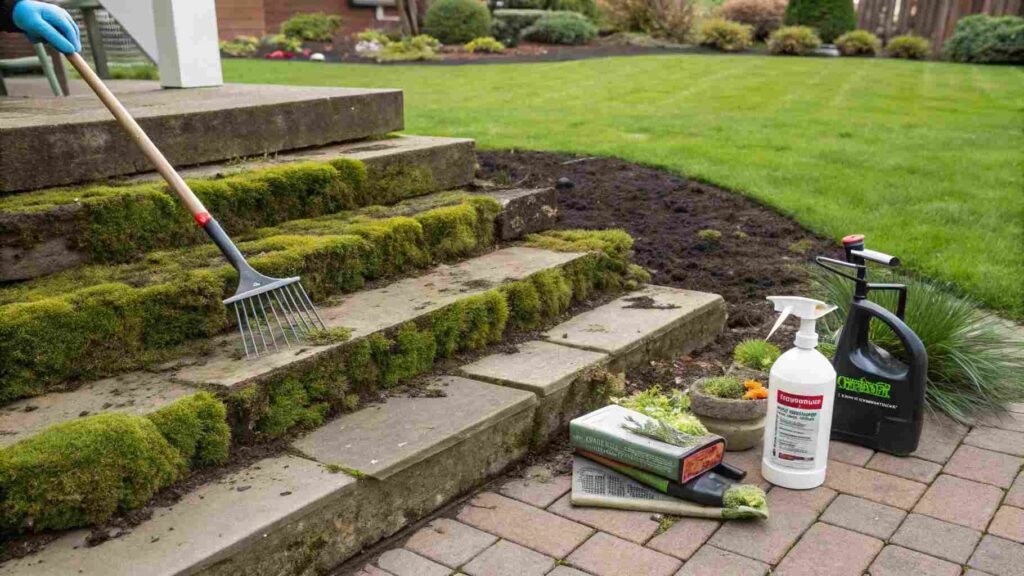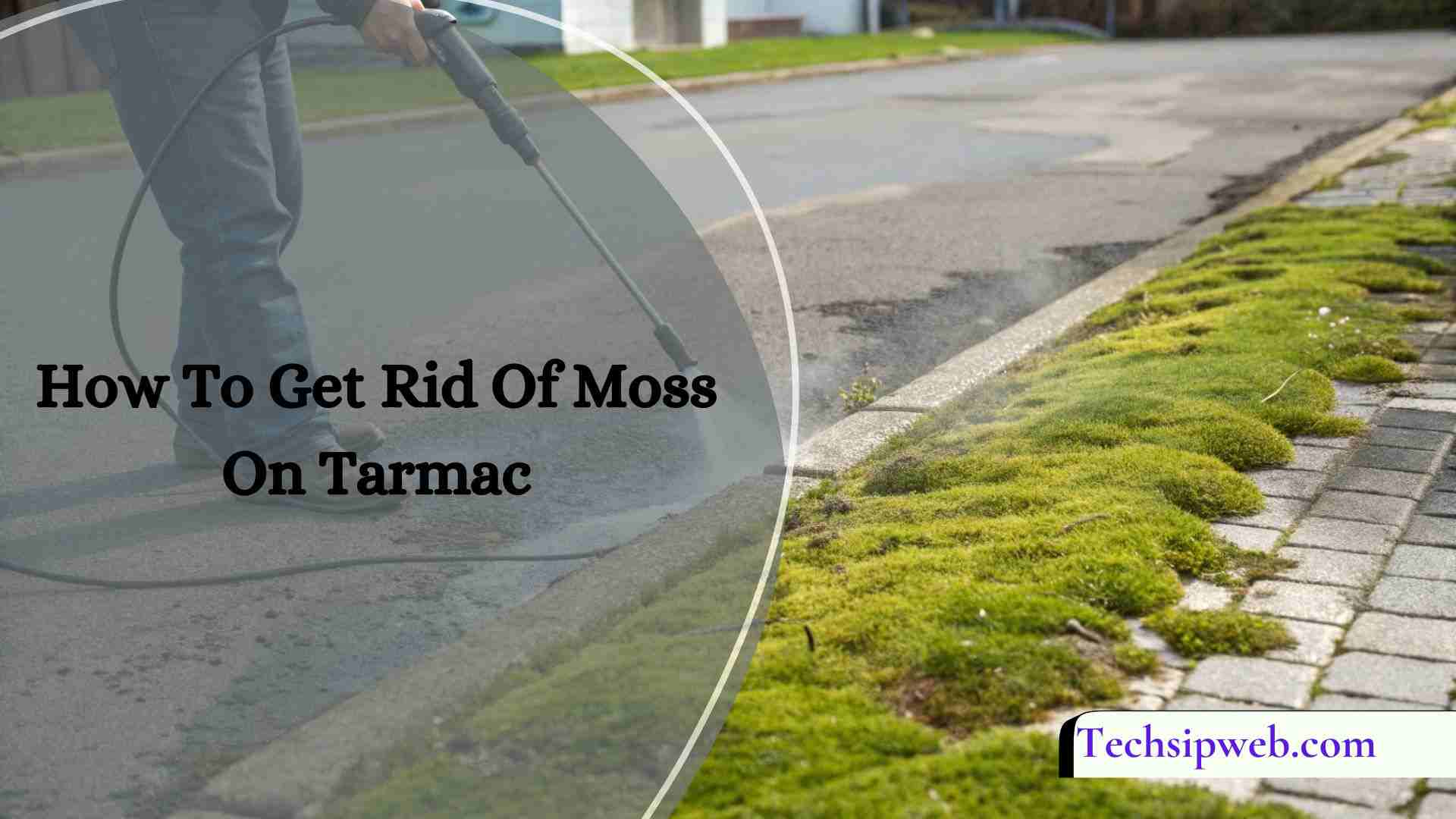Moss growing on tarmac can make driveways and paths look messy and slippery, creating a safety risk. Removing it properly keeps your tarmac clean, safe, and long-lasting.
Stay tuned with us! We will share the best ways to remove moss from tarmac and keep it clean and safe. Don’t miss these simple and effective tips!
Why Does Moss Grow On Tarmac?
Moss thrives in damp, shaded environments where moisture lingers. Tarmac surfaces that lack proper drainage or receive little sunlight are especially prone to moss growth. Some key factors that contribute to moss on tarmac include:
- Moisture retention: Water trapped on the surface promotes moss growth.
- Shade: Lack of sunlight prevents the tarmac from drying out.
- Poor drainage: Standing water encourages moss and algae.
- Organic debris: Leaves, dirt, and other debris provide nutrients for moss to grow.
- Cool temperatures: Moss thrives in cooler, humid conditions, making it more common in autumn and winter.
- Lack of maintenance: Infrequent cleaning and sweeping allow moss spores to settle and grow unchecked.
Best Methods To Remove Moss From Tarmac:
There are several ways to eliminate moss from tarmac, ranging from manual removal to chemical treatments. Here are the most effective options:
Manual Scrubbing and Brushing:
For minor moss growth, a stiff brush or a pressure washer can be highly effective.
- Use a stiff-bristled broom to scrub away the moss.
- A pressure washer with moderate pressure (avoid high pressure, which can damage the tarmac) can quickly wash away moss.
- Sweep away loosened moss and debris to prevent regrowth.
- If moss is deeply embedded, consider using a scraper or wire brush for better results.
Boiling Water Method:
Boiling water is a simple yet effective way to kill moss.
- Carefully pour boiling water over moss patches.
- Let it sit for a few minutes, then scrub the area with a brush.
- Rinse the surface to remove dead moss.
- Repeat the process if necessary, especially for persistent moss.
Vinegar or Baking Soda Solution:
Natural solutions like vinegar or baking soda can help remove moss without harsh chemicals.
- Mix equal parts of vinegar and water in a spray bottle.
- Spray directly on moss and leave it for 24 hours.
- Scrub with a brush and rinse with water.
- Alternatively, sprinkle baking soda on mossy areas and let it sit overnight before sweeping.
- These natural solutions are safe for the environment and ideal for areas near plants or grass.
Commercial Moss Killers & Herbicides:
For stubborn moss, consider a moss killer or herbicide designed for tarmac surfaces.
- Look for biodegradable and pet-friendly moss killers.
- Follow the manufacturer’s instructions carefully.
- Apply on a dry day to maximize effectiveness.
- Rinse thoroughly after the moss has died.
- Some products provide long-term moss prevention, making them an excellent choice for recurring issues.
Bleach Solution (Use with Caution):
Bleach is effective but should be used carefully to prevent tarmac damage.
- Mix one part bleach with five parts water.
- Apply with a sprayer and leave for 15 minutes.
- Scrub the surface and rinse well with water.
- Avoid runoff into gardens or grass areas.
- Wear gloves and protective clothing while handling bleach to avoid skin irritation.
How To Prevent Moss From Growing Back?

Once you’ve removed moss from tarmac, it’s crucial to take preventative measures to stop regrowth.
Improve Drainage:
- Fix any standing water issues by ensuring proper drainage.
- Clean gutters and drains to prevent water accumulation.
- Consider installing drainage channels to direct water away from tarmac surfaces.
Increase Sunlight Exposure:
- Trim overhanging trees or bushes that create shade.
- Consider installing lighting that helps dry the surface faster.
- Allow more airflow by keeping surrounding vegetation minimal.
Regular Cleaning & Maintenance:
- Sweep tarmac surfaces regularly to remove dirt and organic debris.
- Use a moss inhibitor spray periodically to prevent regrowth.
- Wash the tarmac with a mild detergent or moss-preventing solution once every few months.
- Inspect your tarmac after heavy rainfall, as damp conditions can accelerate moss growth.
Apply a Sealant:
- Sealants help protect tarmac from moisture absorption.
- Choose a high-quality, moss-resistant tarmac sealant for long-term protection.
- Apply a sealant every few years to create a water-resistant barrier.
Use Sand or Gravel for Extra Grip:
- Sprinkling fine sand or gravel over the tarmac can improve traction and reduce moss buildup.
- This method also discourages moss spores from settling and growing.
FAQ’s
1. What’s the best way to remove moss from tarmac?
A pressure washer combined with a moss killer solution is the most effective method.
2. What kills moss permanently?
Applying a commercial moss killer and sealing the tarmac can prevent regrowth long-term.
3. How fast does vinegar kill moss on tarmac?
Vinegar starts killing moss within a few hours, but full results may take 24 hours.
4. Will washing powder kill moss on tarmac?
Yes, washing powder can dehydrate and kill moss, but it may leave residue.
5. Is vinegar or bleach better for killing moss?
Vinegar is safer for the environment, while bleach works faster but can damage surrounding areas.
6. Does Dawn detergent kill moss?
Yes, mixing Dawn with water can help break down moss, but it’s not as strong as vinegar or bleach.
Conclusion:
Moss on tarmac is more than an eyesore—it’s a safety risk. With the right removal methods and preventative care, you can keep your surfaces clean and moss-free. Regular maintenance, proper drainage, and protective sealants ensure lasting results. Take action today and enjoy a safer, well-maintained tarmac all year round!






